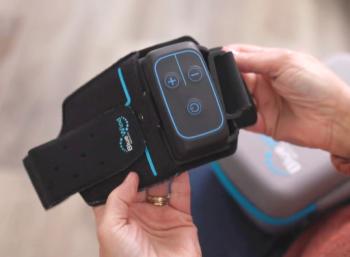
- September 25, 2019 edition
- Volume 96
- Issue 18
What physicians need to know about lines of credit
What sources should physicians turn to when they need money for their practice?
A line of credit is the perfect way to bridge cash-flow gaps, especially when insurance companies stretch claim reimbursements out to 60 or 90 days, sometimes leaving practices in a pinch to meet their everyday expenses.
Other practices may use a line of credit to hire temporary employees, replace or fix equipment-occasions when the funds are only needed for a few months.
Max Reiboldt, president and CEO of the Coker Group, a business consultancy for the healthcare industry, says the first thing a physician looking for credit needs is a pro forma financial projection, which must include a description of how the funds will be used.
“This is the first thing any lender will ask for because they want to know you have a business plan and projections,” he says.
The best sources of credit
Reiboldt notes traditional banks and lending institutions are still the best sources of credit as they have the most competitive rates.
Additionally, if it’s a local bank, they will have a vested interest in the success of the practice. “While that doesn’t mean they will cut them any special deals, it allows for a more friendly and amicable relationship,” he says. “Sometimes they will provide better terms, such as interest-only payments or a balloon payment at the end.”
He explains interest-only payments will allow for an initial period when the practice is trying to ramp up its services and volume of work, to have less obligations to fulfill financially. Normally, this is for a defined, limited period of time, though that is when the balloon payment comes into play.
The balloon allows a similar ramp-up period to accommodate a lack of cash flow to the new practice/healthcare entity. Often, it is then restructured from the balloon to a longer-term loan that requires a principal payment each month or at least within a defined period of time.
Reiboldt warns that mezzanine financial lenders and sub-lenders might not be so willing to work with individual clients. These are simply “bridge” lenders, meaning that they might come into play for a limited period as the business ramps up and also supplement the primary lender.
“They may take a portion of the total capitalization needs and then look to be taken out sooner as the business can afford to do so and/or go through a loan restructuring, again when its future seems more certain,” Reiboldt says. “They may take on an element of risk that a traditional lender would not want or be as comfortable with, and not surprisingly, they would require higher interest and some stricter terms, including even more collateral than traditional lenders.”
So mezzanine lenders/sub-lenders fulfill a necessary role to mitigate the risks of the primary lenders and to take on some of the capitalization requirements. However, things to look out for, he says, are high interest rates, upfront fees and unfavorable terms.
The easiest way to check rates is to compare them to the prime rates that banks set and update periodically. Additionally, banks will effectively charge more interest by charging a commitment fee, which is nothing more than interest paid up front to give the bank some assured return on their money at the point of closing.
Some banks have medical divisions that focus on providing capital to medical practices and work with the physicians if things don’t go as planned, so Reiboldt recommends going to these institutions first.
Getting approval
A. Michael La Penna, principal of The La Penna Group Inc., a Kentwood, Mich.-based financial consultant, says a line of credit is easiest to obtain for a practice with established patients, billings, and collections.
“A doctor would need some time in practice and a track record of solid financial performance with documented accounting and bookkeeping,” he says. “The easiest avenue for credit would be through the doctor’s bank at which he or she does their commercial business.”
David Zetter, CHBC, president of Zetter Healthcare Management Consultants, says a practice should be able to explain why it needs the line of credit or an existing line increased.
“It could be a lack of cash flow at the beginning of each year when deductibles aren’t met and operating expenses are more than cash flow, or they may be looking to expand their practice,” he says.
The information a physician will need to show a lender includes three years’ worth of tax returns (both personal and business); three years of balance sheets and income statements from the practice; and a complete personal financial statement.
“Their personal financial situation and the practice financial situation are important. If the practice is not run profitably, the bank will not see [a line of credit] as an option,” Zetter says. “The bank wants to be able to see from the financials that the practice and owner will be able to make monthly payments without an issue.”
Zetter says every practice should have access to a line of credit to be prepared for any sort of emergency or opportunity that comes up and navigate liquidity issues in a pinch.
“Those obtaining a line of credit should be aware of their credit rating with reporting agencies and know the practice’s financial situation so they can be honest with any lender,” he says. “After finding a lender willing to work with them, it’s vital to be aware of all the terms of the deal, including interest rate, length of term, required payment amounts and whether it is renewable.”
Credit in practice
Linda F. Delo, DO, a family physician in Port St. Lucie, Fla., looked for credit when she started her practice 28 years ago. But she believes there are similarities between what she went through and what those looking for credit today go through.
“Like many students, I had a high debt load and it wasn’t easy to get any money from a bank,” she says. “There was a new hospital in town who came in and co-signed for me, and I believe those type of deals are still out there. I was able to get my first loan, which was for $20,000.”
Over the years, Delo has needed more credit to grow her practice and even to make payroll on occasion. She has a good relationship with her bank and a line of credit, using her business real estate as collateral.
But she doesn’t always go to the bank when she needs money. Delo has several personal credit cards with as much as $50,000 available and, thanks to low interest rates, she finds this is a better short-term solution than a loan. She’s used this method to buy equipment and fix her floors.
La Penna says there can be such a thing as too much credit. Just because a bank approves a substantial line of credit does not mean it should be used.
Depending on the physician’s relationship with the lender, they may need to provide collateral for the line of credit, which will be in the form of practice assets, accounts receivable, etc. The lender also may require personal guarantees and personal assets as collateral depending on a practice’s situation.
“Be careful how many bankers you submit to because a credit inquiry by many banks can possibly affect your credit ratings,” Zetter says.
Alternative lenders
Meredith Wood, vice president of marketing for Fundera, a New York-based financial resource for small businesses, connects physicians with lenders outside of traditional banks.
She explains that lenders typically will request four to eight months of bank statements as well as the most recent tax return for the business, and it’s always a savvy idea to look for a line of credit while a practice is doing well.
“Many practices will come to us when they’re experiencing serious cash flow issues and their financials are hurting; it’s much more difficult for us to help secure capital at that point,” Wood says. “My recommendation would be to secure a line while things are going well so that it’s in your back pocket when those unexpected shortfalls come up.”
She says a line of credit won’t cost the practice anything until they need to use it because most lenders do not have any fees associated with keeping a line open without it being used, meaning interest will only be charged if a physician draws on the funds. A revolving line of credit term is anywhere between 12 and 24 months.
Most line of credit lenders report to commercial credit bureaus, meaning that simply by having the line open, a practice is establishing business credit.
“We recommend a line of credit when the practice needs to hold the funds for a few months at a time,” Wood says. “Depending on the lender, holding a line of credit out to its full term can be expensive in comparison to a term loan or other alternatives.”
Articles in this issue
about 6 years ago
The latest in MOC changes & controversyabout 6 years ago
Medical Economics cartoon: The old fitness trackerabout 6 years ago
Does value-based pay have a future?about 6 years ago
How to get patients to stop smokingNewsletter
Stay informed and empowered with Medical Economics enewsletter, delivering expert insights, financial strategies, practice management tips and technology trends — tailored for today’s physicians.














